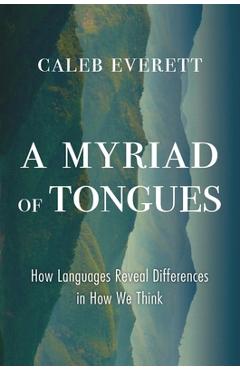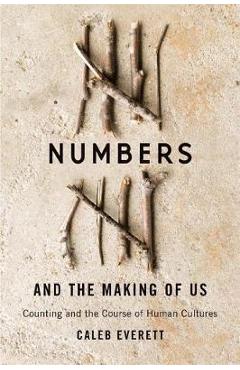A Myriad of Tongues: How Languages Reveal Differences in How We Think - Caleb Everett

Detalii A Myriad of Tongues: How
libris.ro
163.67 Lei
181.86 Lei
Language Arts & Disciplines
Caleb Everett
A Myriad of Tongues: How - Disponibil la libris.ro
Pe YEO găsești A Myriad of Tongues: How de la Caleb Everett, în categoria Language Arts & Disciplines.
Indiferent de nevoile tale, A Myriad of Tongues: How Languages Reveal Differences in How We Think - Caleb Everett din categoria Language Arts & Disciplines îți poate aduce un echilibru perfect între calitate și preț, cu avantaje practice și moderne.
Preț: 163.67 Lei
Caracteristicile produsului A Myriad of Tongues: How
- Brand: Caleb Everett
- Categoria: Language Arts & Disciplines
- Magazin: libris.ro
- Ultima actualizare: 28-10-2025 01:22:05
Comandă A Myriad of Tongues: How Online, Simplu și Rapid
Prin intermediul platformei YEO, poți comanda A Myriad of Tongues: How de la libris.ro rapid și în siguranță. Bucură-te de o experiență de cumpărături online optimizată și descoperă cele mai bune oferte actualizate constant.
Descriere magazin:
A sweeping exploration of the relationship between the language we speak and our perception of such fundamentals of experience as time, space, color, and smells. We tend to assume that all languages categorize ideas and objects similarly, reflecting our common human experience. But this isn\'t the case. When we look closely, we find that many basic concepts are not universal, and that speakers of different languages literally see and think about the world differently. Caleb Everett takes readers around the globe, explaining what linguistic diversity tells us about human culture, overturning conventional wisdom along the way. For instance, though it may seem that everybody refers to time in spatial terms--in English, for example, we speak of time passing us by--speakers of the Amazonian language Tupi Kawahib never do. In fact, Tupi Kawahib has no word for time at all. And while it has long been understood that languages categorize colors based on those that speakers regularly encounter, evidence suggests that the color words we have at our disposal affect how we discriminate colors themselves: a rose may not appear as rosy by any other name. What\'s more, the terms available to us even determine the range of smells we can identify. European languages tend to have just a few abstract odor words, like floral or stinky, whereas Indigenous languages often have well over a dozen. Why do some cultures talk anthropocentrically about things being to one\'s left or right, while others use geocentric words like east and west? What is the connection between what we eat and the sounds we make? A Myriad of Tongues answers these and other questions, yielding profound insights into the fundamentals of human communication and experience.

Produse asemănătoare
Produse marca Caleb Everett

A Myriad of Tongues: How Languages Reveal Differences in How We Think - Caleb Everett
![]() libris.ro
libris.ro
Actualizat in 28/10/2025
163.67 Lei
